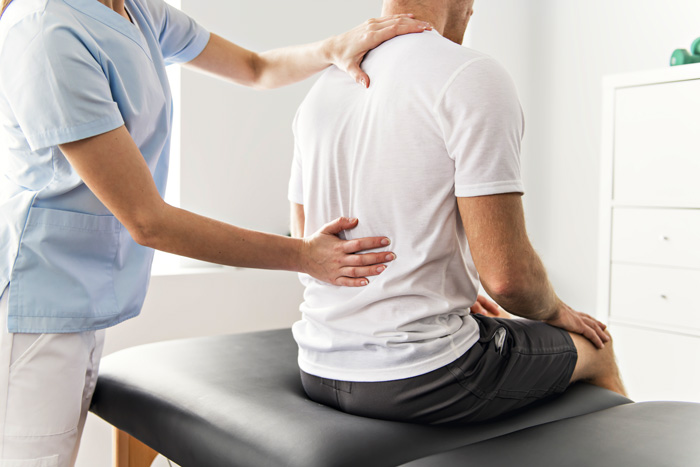Is it possible to treat and manage pain without feeding an addiction?
Pain management in addiction recovery is a complex process, one that relies on the patient working closely with their doctor to minimize risk.
Many men and women with substance abuse disorders also struggle with pain, including acute pain from injuries and chronic pain. If this sounds like what you are facing, Safe Harbor Recovery in Portsmouth, Virginia has the supportive team and resources you need to get relief.
The Complications of Treating Pain and Addiction
Whether a person is using illicit drugs or alcohol, any type of addictive substance, including pain medications, can be worrisome. The most common painkillers are opioids, highly addictive substances commonly used by doctors to treat acute pain. They use them because they work and because the goal is short-term use. However, for a person with an addiction, any use of opioids for pain isn’t ideal.
With 2 million American adults struggling with prescription opioid medication, according to the American Society of Addiction Medication, it’s important to recognize the threat. In some situations, these drugs, prescribed after a surgery or severe injury, can be the catalyst to start your addiction.
Regardless of what substances you’ve abused in the past, it means opioid pain medications are typically out of reach. What should you do, then, to manage your pain?
What Alternatives for Treating Chronic Pain Are Available?
There are several other options that can help you with pain management. At Safe Harbor Recovery in Portsmouth, Virginia, it’s our goal to help you find the treatment plan that’s most effective for your needs. This may include the use of anticonvulsants, NSAIDs, chiropractic care, acupuncture, massage therapy, yoga, and/or physical therapy.
Anticonvulsants
These drugs can be used to help treat some types of pain and don’t have addictive qualities. Drugs such as pregabalin (Lyrica) work well to combat nerve pain, for example. Gabapentin (Gralise) also works for this type of pain.
Nonsteroidal Anti-Inflammatory Drugs (NSAIDs)
You may find over-the-counter products like ibuprofen and acetaminophen to be a good starting point. These drugs are readily used for the treatment of pain, including pain from headaches, arthritis, and osteoporosis. If the pain medications available to you over-the-counter are not working well, your doctor may prescribe other options such as celecoxib (Celebrex) or meloxicam (Mobic).
Chiropractic Care
If you have pain in your joints, back, or legs, chiropractic care can be a good starting point for treatment. It can also help with headaches and migraines in some individuals. This type of care works to better manage the central nervous system’s communication pathways. With proper alignment of your joints and spinal column, it can work to turn off the pain signals going to your brain. It’s a noninvasive treatment that many people benefit from on a regular basis.
Acupuncture
Perhaps one of the oldest methods for the treatment of pain, acupuncture works by increasing blood flow to the pressure points in the body. This is done by placing very small, thin needles along specific pathways in the body. By increasing the amount of oxygen-rich blood flow moving to the area, it may work to reduce pain by improving the immune system’s function. It also helps promote chi, which is the body’s natural energy.
Massage Therapy
Massage isn’t just for relaxation and stress-relief. It is also an excellent tool for pain relief. It works to stimulate the flow of blood to the impacted area, helping to reduce tension and inflammation. A massage therapist works to manage pain in a localized area, speeding up the body’s ability to heal the tissues in that area. Massage therapy can also help to reduce your stress, which contributes to the way pain feels.
Yoga
If you have joint or muscle pain or chronic pain that impacts various areas of your body, yoga may be right for you. Unlike other forms of exercise, it doesn’t tax your joints or require a lot of physical fitness to get started. It does work, however, to teach you how to control your breathing. The various positions in yoga also can help to stretch muscles, tendons, and ligaments. Yoga also works well for stress relief.
Physical Therapy
Physical therapy is the process of re-teaching your body the right ways to move and function in an effort to improve mobility and reduce pain. This, coupled with treatments such as cognitive behavioral therapy, can help you to see a significant reduction in the pain you feel.
What Else Can You Do to Manage Pain?
Every person’s best pain management solution is unique. Yet, chances are good there are holistic and non-drug related methods to improve your quality of life by reducing your pain. This may include:
- Meditation
- Herbal remedies
- Counseling services that teach you problem-solving skills
- Anxiety and depression relief, which can in turn spur improved pain relief
- Eating nutritious meals
- Improving your sleep quality and quantity
- Getting exercise such as swimming
Getting help for your pain means taking the first step towards recovery. Work with our team at Safe Harbor Recovery in Portsmouth, Virginia to find a solution that helps minimize your addiction risks while giving you back a higher quality of life. Contact us to learn more about our recommended pain management strategies.

